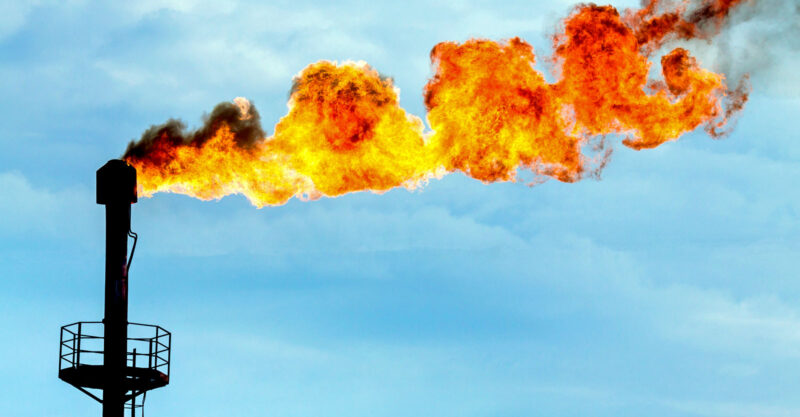Miss a day, miss a lot. Subscribe to The Defender's Top News of the Day. It's free.
By Shannon Kelleher
Offshore oil and gas operations in the Gulf of Mexico are releasing far higher quantities of a potent greenhouse gas than regulators have estimated, according to a new study published Monday.
The analysis reveals that the climate change impact of these activities is more than double what official estimates suggest.
The study, published in Proceedings of the National Academy of Sciences, found that 2021 calculations by the U.S. Environmental Protection Agency — using data from the U.S. Bureau of Ocean Energy Management (BOEM) — correctly estimated carbon dioxide emissions but underestimated methane emissions.
The data, which is based on engineering information, rather than on-site observations, failed to capture methane emissions because an older type of shallow-water platform used in offshore drilling often behaves like a “super-emitter,” leaking large amounts of the greenhouse gas, said Alan Gorchov Negron, a Ph.D. candidate at the University of Michigan and first author of the study.
These platforms are central hub gathering and processing facilities, which collect oil and gas through pipelines that extend from smaller nearby platforms.
“They’re a fraction of the platforms in the Gulf of Mexico but they contribute disproportionately to the total methane emissions and total greenhouse gas emissions,” said Negron.
“We don’t know exactly why the methane emissions are higher than what the inventory expects,” he added. “It’s either because of unknown emissions or unreported emissions.”
Methane emissions are considered major contributors to harmful climate change.
On the eve of expansion
The study’s findings come “on an eve of a series of expansions in [oil and gas] production” for the Gulf of Mexico, said Negron.
At an auction last week, oil and gas extraction companies gained access to 1.6 million acres of waters in the Gulf — a drop in the 73.3 million-acre federal waters “bucket” that BOEM has opened for bidding. Ten more lease sales are proposed for between 2023 and 2028, said Negron.
“These lease sales have regions of shallow waters that they propose for expanded production that they’re willing to auction off,” said Negron. “We show that if you’re going to expand production of shallow waters, you need to contend with the reality that shallow waters, as currently operated in some places, have a disproportionate climate impact.”
While previous research has pointed to a gap between actual and reported methane emissions in the Gulf, the new study is the first to estimate the full climate impact of these emissions, said Negron. The analysis combines novel emissions data collected via airplane with data from several previous studies.
While inventories “typically do pretty well with carbon dioxide,” he noted, because the gas is a function of fuel combustion, methane is more challenging to assess and calls for a different strategy.
“We really need observations to look at methane emissions because the sources are either intentional venting operations during processing or unintentional leaks from old pieces of equipment,” said Negron.
The study’s findings point to “low-hanging fruit” for emissions reduction, he said. The industry could greatly reduce its greenhouse gas emissions in the Gulf by avoiding expanding production on problematic shallow-water facilities or by working to mitigate emissions in these targeted locations by replacing venting with efficient flaring, repairing run-down equipment, or abandoning certain facilities, according to the study.
Understanding where methane leaks are occurring and exactly what causes them can bolster efforts to reduce emissions from fossil fuel production around the world, said Mason Inman, data director for the Global Energy Monitor.
“More measurements like these can help us understand the problem better, can help inform campaigns to push for changes, and can help inform regulatory processes,” said Inman. Even if better monitoring technology becomes available in the future, he believes careful assessments will still be a must.
“In the future, satellites should be able to provide far more extensive monitoring of methane emissions from oil and gas production … but they can’t monitor everywhere at once.”
Originally published by The New Lede.
Shannon Kelleher is a reporter with The New Lede.





